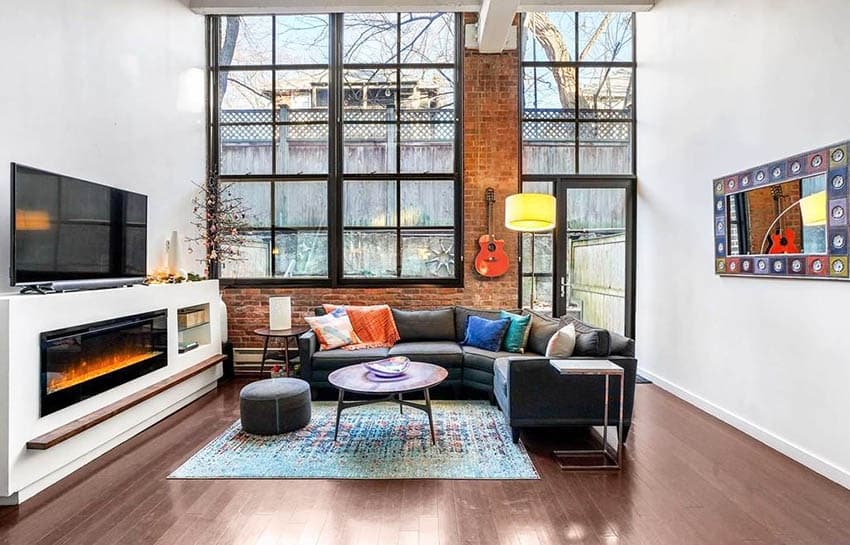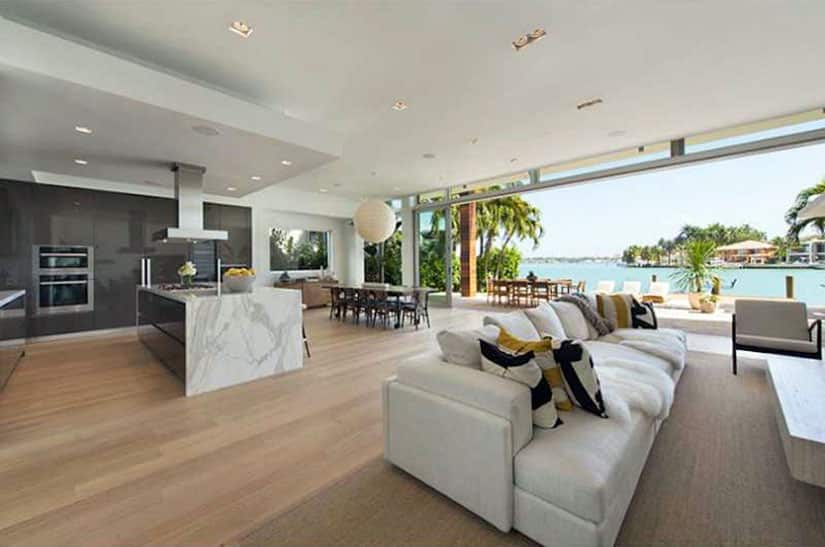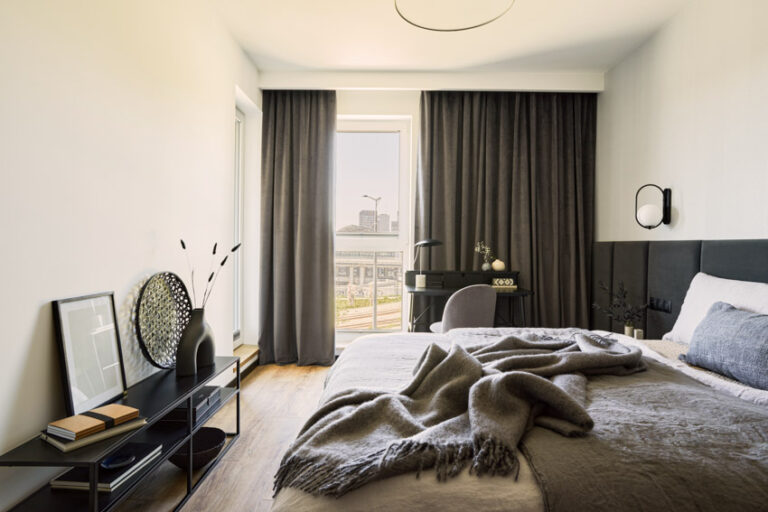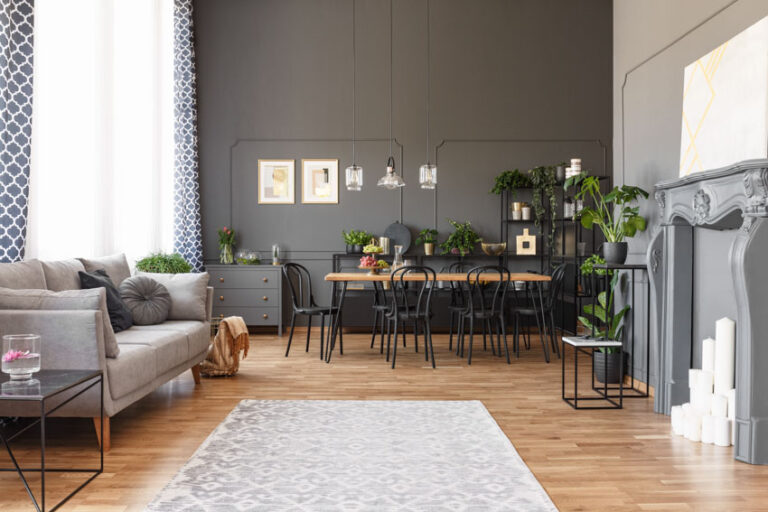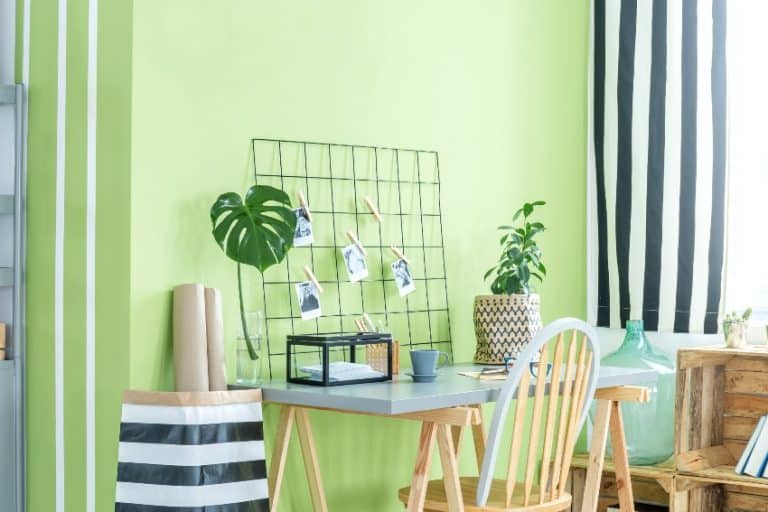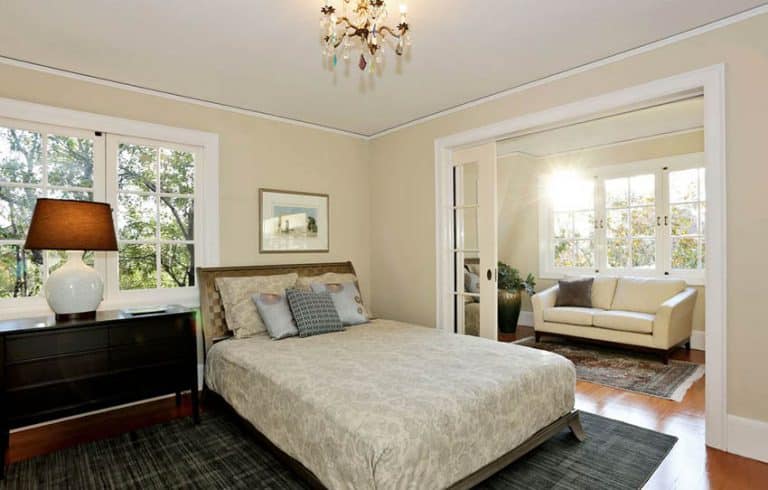Bamboo Flooring (Pros and Cons)
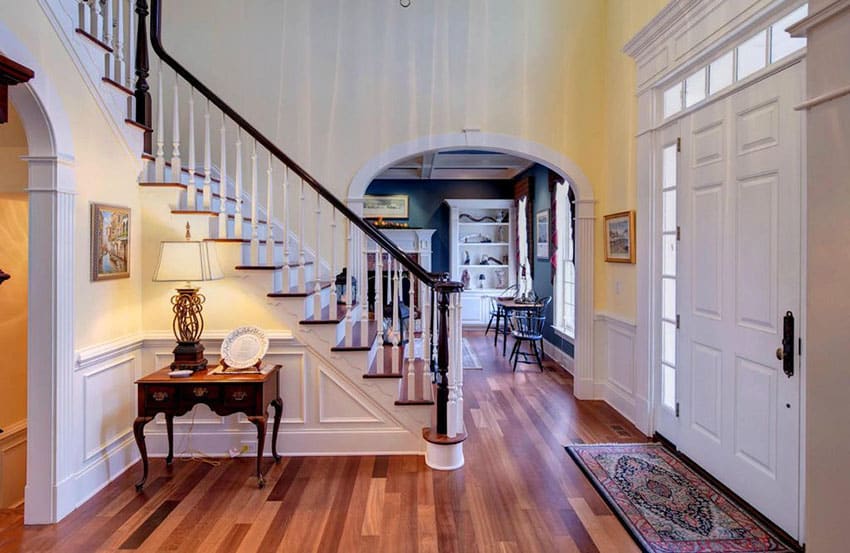
What is Bamboo Hardwood Flooring?
The bamboo plant is a type of perennial evergreen plant that is actually one of the largest types of grass, with a diverse range of varieties. The making of bamboo-engineered hardwood results in shredding the thin strips of grass to be heated under pressure and glued accordingly to form a wooden flooring board.
Strands of bamboo can be cut into many thin strips to be laminated to form a layer of plank. Or a thin membrane of bamboo can be laminated onto plywood. Or else, the strand- woven bamboo is a result of mixing up of the strands to be locked together. These are varieties of flooring options that you can opt for your floor type depending on the requirements.
Bamboo Flooring Pros

Elegance – The outstanding look of a floor can be easily achieved by installing a bamboo floor. The versatility of shades and strength combine to accentuate the overall effect of the flooring. If you need darker tones of bamboo, carbonized bamboo seems like the perfect solution. When this material is carbonized, the flooring becomes much softer and darker.
Water Resistance – Its resistance to water is quite a convenience. The adaptability of this flooring inherits in resistance to water is an added benefit. This leaves the homeowners the ability to install bamboo flooring anywhere within the household (except the washroom) despite the functionality.
Refinished – The beauty of bamboo floors results in the ability to be able to retouch and refinish. It is advisable to be sanded when this flooring starts to wear and distort. The option of retouching results in making the bamboo look decent even with the passing of time.
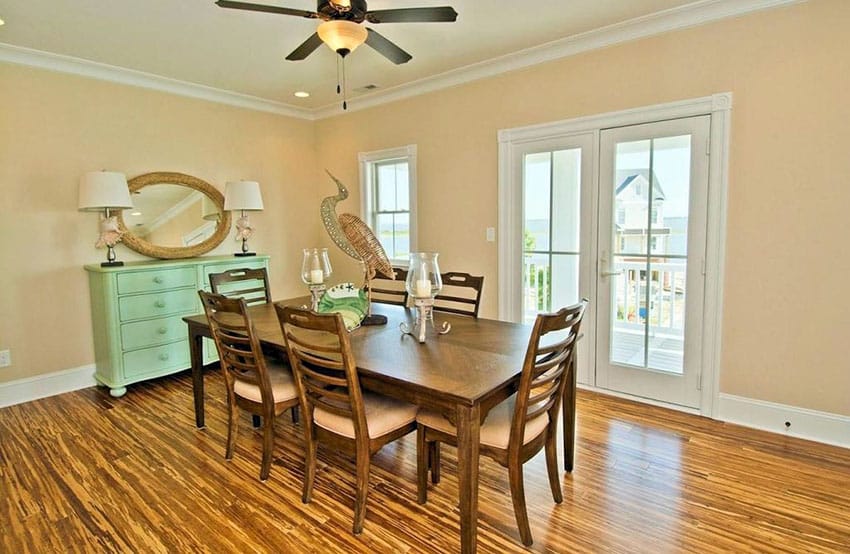
Abundance – What is cool about this material is its abundance. This results in saving the exotic types of hardwood that otherwise need to be cut down for various human necessities. And, unlike other hardwood, bamboo does not so long to mature. This is another major reason for the abundance of the material compared to other similar hardwood types that take up decades to mature.
Versatility – It is essential to be aware that the strength of this material depends on its manufacturing qualities. For instance, carbonized bamboo flooring can result in a shorter life span but contains a rich, organic shade. On the other hand, types of woven bamboo flooring and un-carbonized bamboo flooring can serve longer and steadier. These floors, owning their unique characteristics, create a vibe of a clean and elegant design to fit the type of requirement.
Cost – It is quite affordable to install, making it a great choice for home renovation projects. This flooring cost usually ranges from $2 to $4 per foot depending on the thickness, color, and type, with bamboo being the most durable. Overall the cost of hardwood flooring is more expensive by a few dollars per square foot.
Bamboo Wood Flooring Cons
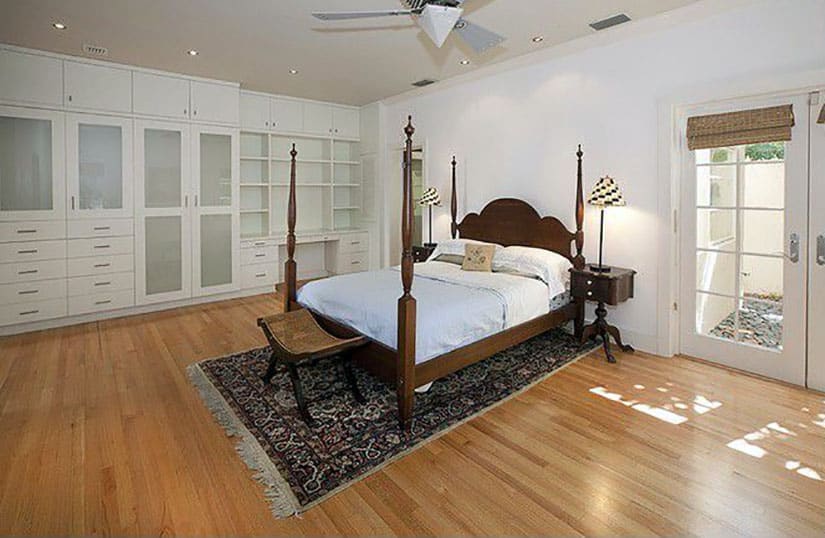
Vulnerable To Water – Even though we listed this material as one of the better wood types for water resistance, it is still susceptible to damp conditions like all wood types. As much as this may seem like the best option, it is important to be aware of its vulnerabilities, too. It is not advisable to install this type in damp areas or in places that are prone to water leaks. Even though this material will not show instant results, in the long run, exposure to these kinds of environments will only result in a shorter lifespan of this flooring.
Manufacturing Process – The manufacturing process uses a variety of chemicals since the material requires different types of chemicals to be glued together. It is equally important to be aware of the manufacturing process as it can be a little sketchy, especially depending on the reliability or ethics of the firm or the brand.
Types of Bamboo Floors
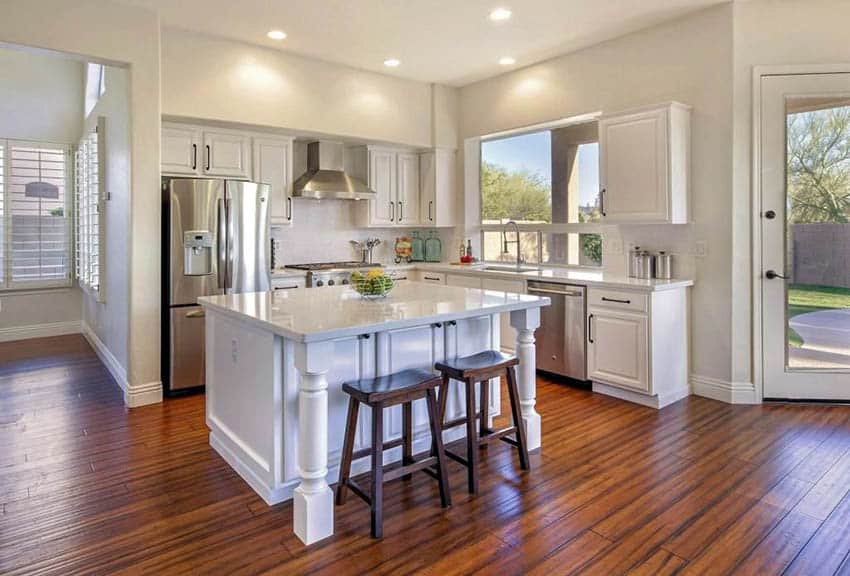
Solid Bamboo Strip Flooring
This is available in three different styles. Vertical grain solid strip is made from bamboo strips stacked on their edges and glued together. You see this type of construction in butcherblock countertops. See examples of bamboo countertops here.
Flat grain solid strips are what you see most in the flooring department of home improvement stores. It consists of stacked, flat strips of bamboo that are laminated together. Strand bamboo is made when the mix resins with shredded bamboo and pressed into hard planks. These types are typically available in tongue and groove planks, like hardwood flooring, and are installed in the same manner as a hardwood floor. The great thing about this kind of material is that it comes pre-finished, so once installation is done, you can use your floor.
Engineered Bamboo Board Flooring
These are typically found using the strand method of mixing resins with shredded engineered bamboo. A significant difference between this and solid flooring is the installation method. Engineered bamboo is installed as a floating floor, which means it is laid over a foam rubber underlayment and isn’t attached to the subfloor. One of the significant advantages of this is that installation is much easier, faster, and cheaper than solid bamboo installation.
Engineered bamboo floors look great in the living room, bedroom, dining room, or kitchen. You can read more about types of engineered hardwood for the kitchen here.
What Type of Bamboo Style Flooring Is Right for Me?
Which choice is right for you depends on your budget, needs, and what types of demands will be made on your flooring. If you live in a humid area, you might want to consider solid bamboo as it is slightly more tolerant to humidity changes than engineered bamboo. This tends to be a bit less expensive than the engineered variety, but the installation costs more for solid. Price doesn’t always dictate quality when it comes to this floor material, so look at the warranty. A longer, more encompassing warranty is a great indicator that you are looking at a quality product regardless of initial cost.
Finally, it has a subtle, warm glow, and we often see the softer, wood-toned shades displayed on store shelves. It is available in over 50 stains, ranging from bright to soft tones, giving you several options to choose from. It wasn’t too long ago design magazines considered this material a trend. But this economical and eco-friendly flooring has proved it is here to stay.
As an affordable, easy-to-maintain alternative to hardwood, bamboo is now a top choice for designers and design magazines. No matter where you put it in your home or how many design phases you go through, it will be there, providing that beautiful backdrop to all of your design needs.
Is Bamboo As Flooring Waterproof?
This material is pretty resistant to water, but it is in no way waterproof. It has the unique characteristics of a higher water resistance, unlike other hardwood options. If you leave a puddle of water to be soaked on the floor over time, that is when the floors will start to react to swell or distort. Otherwise, this material, with careful consideration of spills, can successfully be installed in pantries or kitchens.
To note, special weaving methods result in the strength and durability of types of bamboo floors which affects in terms of water resistance. Certain types can serve more reliably than its average counterparts. This material is much more likely to be less affected if exposed to water. It is equally important to be conscious of the environment in which the floors will be installed. For instance, it is advisable to install this material in areas where humidity doesn’t fluctuate more than 15 degrees. Since it does not have uniform density, a wide swing in humidity can cause shrinkage to occur in some situations.
Overall, this material can be installed anywhere with the exception of the washroom. Even in the kitchen or the pantry, this material can be of great help if maintained accordingly. The advantage it possesses over other hardwood types, such as the clean and aesthetic appeal, results in brightening the space even more. Even though it is not waterproof, certain types such as woven bamboo, have the characteristics of water resistance, more so than their average counterparts or other types of hardwood floors.
Is Bamboo Floor Pet-Friendly?

Even if that’s the case, understandably, for a pet-friendly house, in particular for dogs, scratches can be a little too common of a problem. Unlike many of the hardwood types out there prone to scratches, this type of material for floors can result in a seemingly lesser amount of scratches overall.
Ideally, among the many types, a strand-woven variety, which is one of the stronger counterparts of bamboo flooring, is pretty much of an ideal solution for a pet-friendly flooring option to look out for.
This floor covering is also ideal for pets for hygienic reasons because it doesn’t collect dust, unlike carpets. The ease of the cleaning process is another practical reason to be counted. Some come with an additional approach of an anti-slip lacquer, which makes it easy for the pets to move around freely as the material becomes less slippery. Additionally, the durability and the go green concepts with clean aesthetics are combined in a bamboo floor, which makes the majority of pet owners quite satisfied with the end results.
For more ideas, visit our page on the different types of flooring here.

